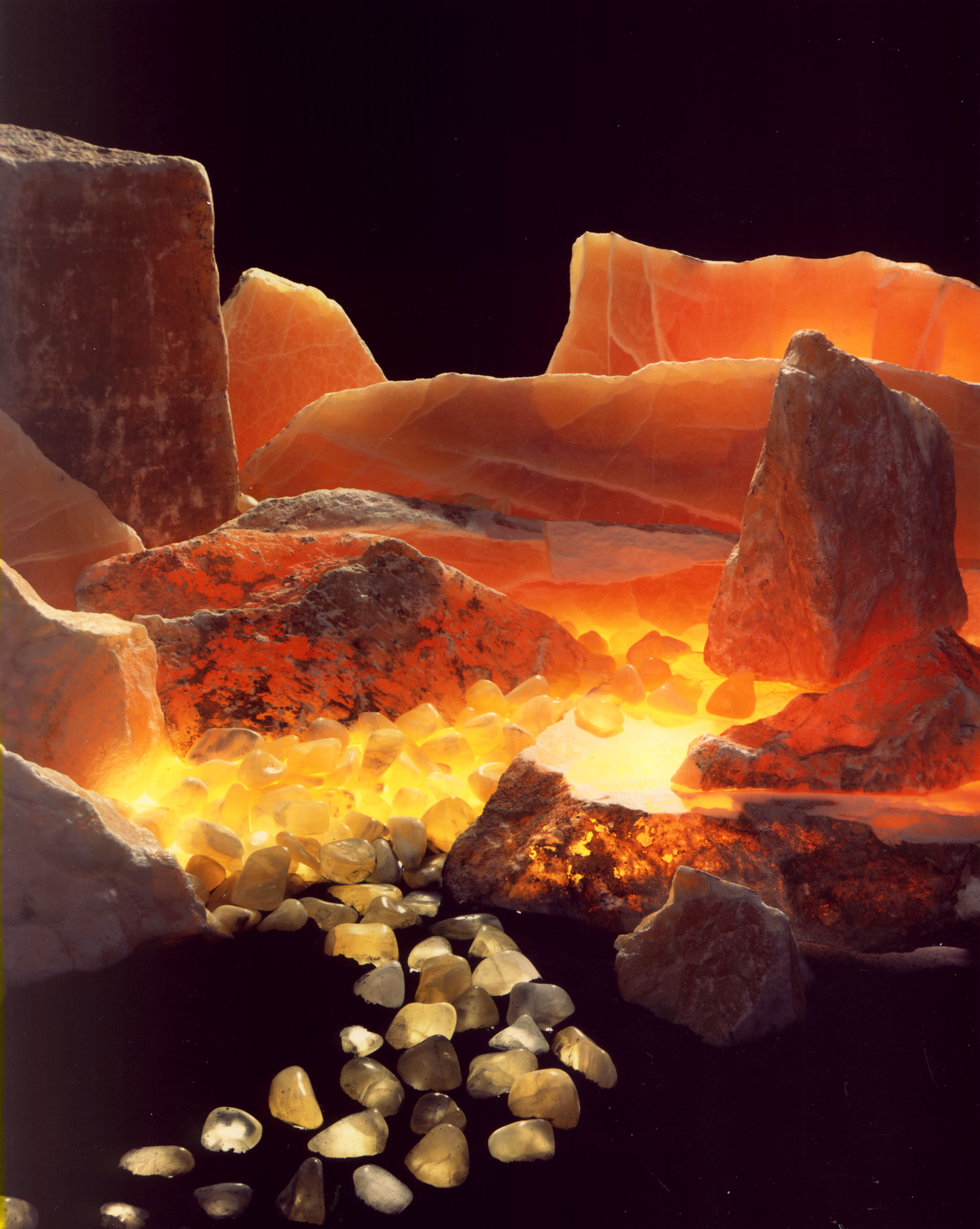This is honeycomb calcite. It can only be found in one mine in the entire world!

This is honeycomb calcite. It can only be found in one mine in the entire world! Duchesne, Utah
The honeylike yellow and the honeycomb appearance of the calcite pattern, revealed by polishing, is where the impressive stone obtains its name.
The "honeycomb" is formed by long fibrous and tubular crystal cells of honey-yellow calcite, outlined by white membranes that surround the cells, much in appearance like honeycombs of bees, which are honey yellow cells surrounded by pale waxy walls.
The honeycomb pattern -- the "bundling" of the needle-like cell growths -- adds strength to the stone.
The stone has a unique appearance: honeycomb calcite has a yellow, orangy, gold color, membranous patterns, particular transparency and translucency. It is a stone that will take a high amount of polishing. It doesn't fade in sunlight as quickly as other calcites.
The golden color comes from sulfur deposits that took place at the time of the calcite's formation, it is thought, and the calcite patterns change depending on the point of origin of the calcite cell growth: some are tight "honey sugar," small hexagon cells grouped close. Some are large cell areas, making the stone appear to some like "petrified honey."
Honeycomb calcite comes from only one place in the world, Utah state. It comes in soft, pale sunshine yellow to deeper, richer golden amber colors. It depends on the thickness of the stone.
This color and pattern is set off to a particular effect when there is backlighting. The stone appears to glow due to its translucency, holding and diffusing light.








